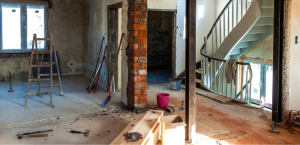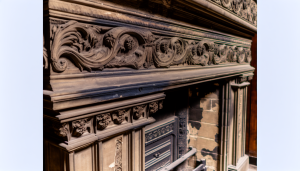Newfoundland and Labrador is the only province where the primary building material is wood—a tradition that dates back almost four centuries.
In the 1600s, a wave of—mostly Scottish—settlers moved onto the island of Newfoundland, and set to work building new towns out of the most abundant material available to them—wood.
This is not to say that other options weren’t available. In fact, those early European Newfoundlanders had access to an abundance of the materials required to make inexpensive concrete and bricks. Mollusc shells—which can be burned to create lyme—crusted the island’s rocky shores. Gravel and sand—two other key ingredients to making concrete—were also easily found, as was clay. But, unlike in Boston, where concrete had been more widely used in early construction, the first waves of Newfoundlanders opted—almost uniformly—to build wooden homes.
Wood—for all of its flammability and tendency to warp with age—had a few key advantages over concrete or brick. Wood cottages could be built cheaply, and without the need for experts in construction. Most importantly, they could be built quite quickly. For those early settlers, who had heard terrifying stories of the island’s long, bitter winters, the need to build houses before temperatures plummeted was paramount—so the island was soon filled with clapboard cottages.
These original homes are, unfortunately, no longer standing. In fact, the Rock’s whistling winds and yarn-worthy storms have left no building constructed before the early 19th century standing.
Judged on its architecture, Newfoundland and Labrador is unusually conservative. In fact, many new family dwellings intentionally imitate the classic look, despite wood no longer being the most practical option. As a result, Heritage Homes readers will struggle to identify which buildings are historically important—and which are imitations.
Experts would point out that, despite the continuous use of wood in home construction in Newfoundland, there are distinct styles which can help to peg a particular home to a particular period.

The mid-Georgian Anderson House is the oldest building in St. John’s—and a rare example of Newfoundland’s own take on Georgian architecture.
The first wave of construction that has survived is of the mid-Georgian period—though many of the examples that exist are a little hard to identify. Where most home enthusiasts will think of brick, marble and concrete facades when they think of Georgian-era homes, in Newfoundland, they are commonly made of wood.
Reported to be the oldest standing building in St. John’s, the beguiling Anderson House typifies Newfoundland’s all-wooden spin on Georgian design.
With its evenly placed paned windows, the two-and-a-half storey building does—though squinted eyes—bear a resemblance to similar manor homes built in England in the same period. A clearer look, however, would show some striking differences—ones that go far deeper than the clapboard on the facade.
Build for a wealthy retired soldier in the early 1800s, the design itself was meant to echo the rustic sensibilities of the island’s older buildings, rather than to celebrate the wealth its owner. The interior featured plastered walls, accented by unvarnished, hewn hemlock—a clear indication that the original occupant was more interested in architecture than in ostentatious displays of wealth. The building’s spiral staircase, however, indicates the designer wasn’t entirely bound by the tenets of local tastes.
While its well-to-do owner had the funds to experiment in the design of his grand home, Newfoundland’s cottage owners were also beginning to shake-up their approach to construction. While the first European-style cottages tended to be relatively one story, rectangular and symmetrical, designs began to shift in the early part of the 19th century.
Cottage-builders started to include connected stables and workshops, nested under the roofs of the main structures. This, naturally, led the designers to give up on symmetry. By the middle of the century, these outrider buildings began to become more incorporated into the main segments of the building—which were, increasingly, being built with a second storey.

A traditional saltbox home in Newfoundland. The style became the dominant one for single-family dwellings built in the middle of the 19th century.
These houses—known as saltboxes—remain the most iconic style native to Newfoundland. Unfortunately, they would not remain the dominant one for very long. By the late 19th century, biscuit box houses, which were wide, rectangular buildings with relatively flat roofs, became the standard model. The dominance of this dreary design lasted well into the 1950s.
Despite this troubling trend, the late 19th century saw many houses built in all-wood takes on styles growing in popularity in Britain and America. The best example of this is found in St. John’s.

Elizabeth Manor, built in the 1890s, marries the Second Empire style with the Newfoundland architectural aesthetic.
Elizabeth Manor, built in the 1890s, is the answer to the question, “can you build a Second Empire-style building out of wood.” It is a resounding yes.
On paper, the building checks all the traditional boxes for the style. Its Mansard roof, which juts over three evenly spaced hemispheric windows, would not look out-of-place on house built in the same style in Connecticut. The two second story bay windows, which peer out over the street below, are just as appropriately authentic. What marks the house out as different is the clapboard siding—and the fact that the building has been constructed on a steep hill, and is balanced on a cement foundation.








